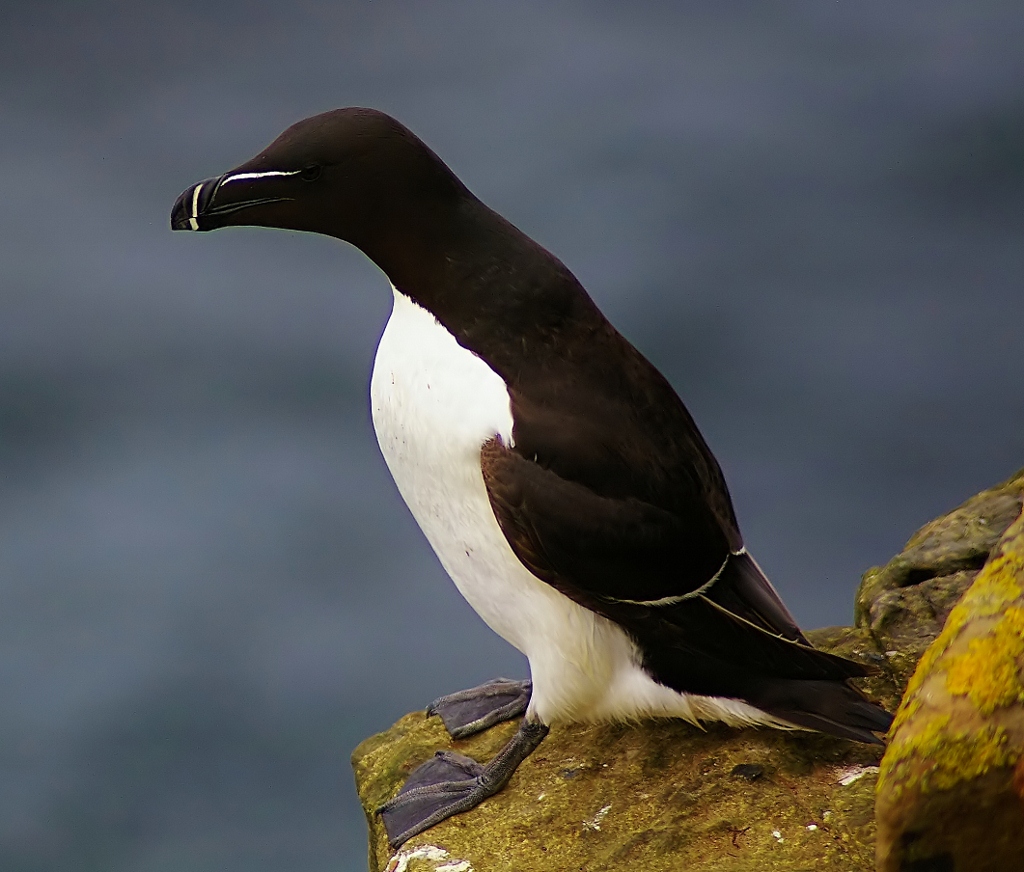 |
| Photo by Paul Wordingham (Wikipedia) |
Common name:
razorbill (en); torda-mergulheira (pt); petit pingouin (fr); alca común (es); tordalk (de)
Taxonomy:
Order Charadriiformes
Falimy Alcidae
Range:
This species breeds along the shores of the northern Atlantic, both in North America and Europe. On the European side they breed from north-western Russia to northern France and winter from the Baltic and North Sea down to the western Mediterranean and the coast of Morocco. They also breed in Iceland, southern and western Greenland up to Baffin Bay and along the coast of Canada down to Maine in the north-western United States and winter down to the coast of Connecticut.
Size:
These birds are 38-43 cm long and have a wingspan of 60-70 cm. They weigh 500-890 g.
Habitat:
They breed on rocky coastal areas, both on mainland cliffs and offshore islands, feeding mostly on continental shelf waters, but also on oceanic waters during winter.
Diet:
They forage by diving into the sea, up to a depth of 120 m. They mainly feed on schooling fish, such as capelin Mallotus villosus, sand lance Ammodytes sp., juvenile cod Gadus morhua, sprat Sprattus sprattus, herring Clupea harengus, sculpins Myxocephalus and small euphausiids. They also take crustaceans and polychaetes.
Breeding:
Razorbills breed in May-July. They form large colonies with each pair nesting on a rock crevice or among boulders, laying the egg on bare rock. The female lays a single ground colour egg with dark brown blotches, which is incubated by both parents for 35-36 days. The chick is fed small fishes by both parents and the male will lead him out to sea after 17-23 days.
Conservation:
IUCN status – LC (Least Concern)
This species has a very large breeding range and a global population estimated at 1-1,4 million individuals. After large declines early in the 20th century, caused by hunting and egg collection, the population stabilized and even showed some increases in recent years in North America and the British isles. However, commercial fishing causes death of birds that become tangled in nets and reduces food availability for this species, while oil pollution is another potential threat to the razorbill.







